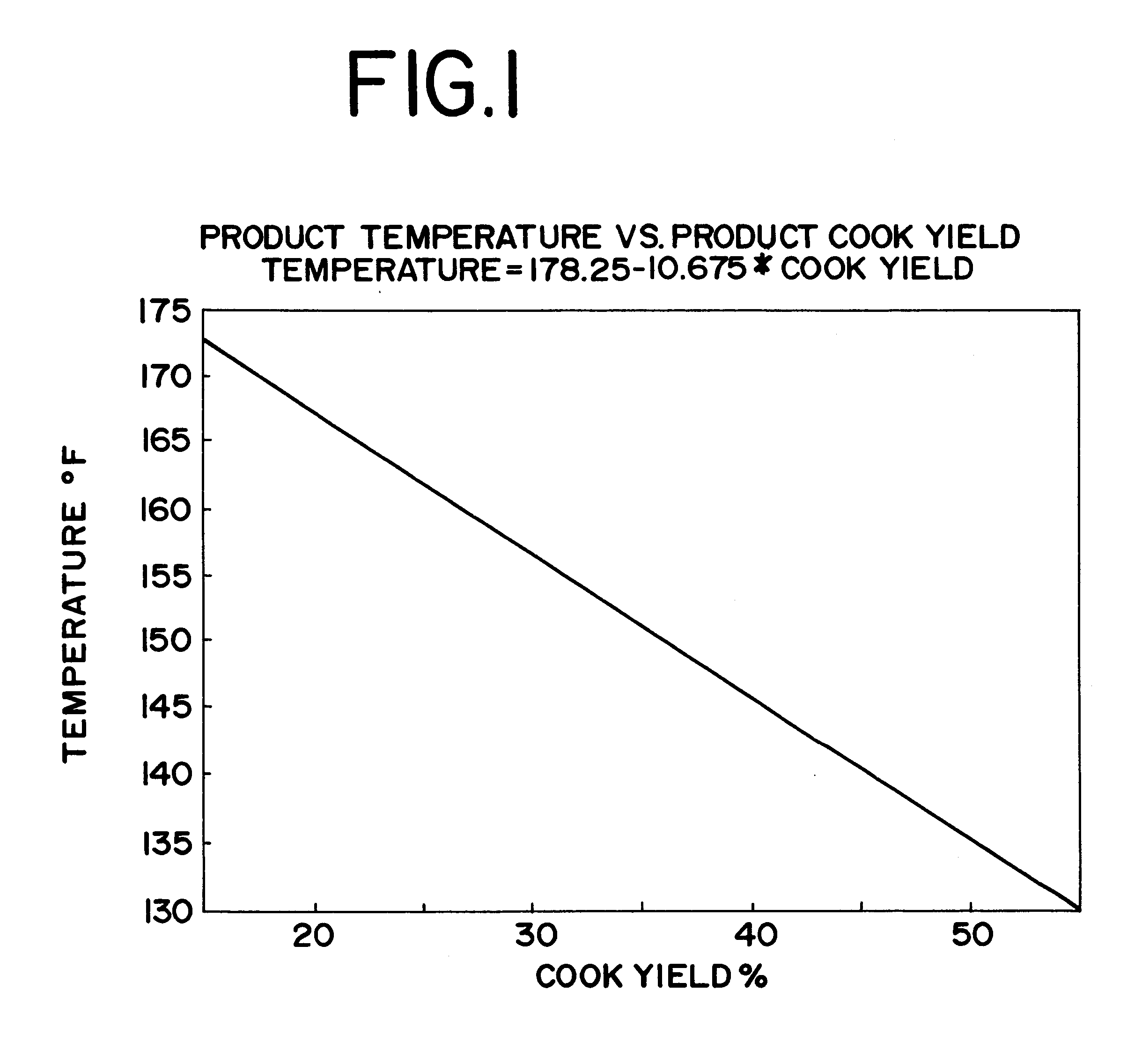Method of curing and processing par-cooked bacon derived from pork bellies
- Summary
- Abstract
- Description
- Claims
- Application Information
AI Technical Summary
Benefits of technology
Problems solved by technology
Method used
Image
Examples
Embodiment Construction
Par-Cooked Strip Form Sliced Bacon
Pork bellies of a selected weight and size are trimmed in the manner known in the art. Next, a seasoned pickle solution is injected into the trimmed pork bellies to preferably 110% of green weight using a multi-needle Formaco injector or such other injector known in the art. The seasoned pickle solution may have any composition known in the meat curing art. Smoke flavoring agent must be added to the pickle solution.
At this point, prior art techniques teach smokehouse treatment of the pork bellies. Instead, in accordance with the present invention, the encased pork bellies are chilled from temperatures of 35.degree. F. To 40.degree. F. (approximately ambient air temperature within a commercial packing plant) to no more than 25.degree. F. and, preferably within the range of 22.degree. F. to 25.degree. F. It has been discovered that this temperature range cold-sets the pickle solution to thus retain the solution within the pork bellies by rendering the...
PUM
 Login to View More
Login to View More Abstract
Description
Claims
Application Information
 Login to View More
Login to View More - R&D
- Intellectual Property
- Life Sciences
- Materials
- Tech Scout
- Unparalleled Data Quality
- Higher Quality Content
- 60% Fewer Hallucinations
Browse by: Latest US Patents, China's latest patents, Technical Efficacy Thesaurus, Application Domain, Technology Topic, Popular Technical Reports.
© 2025 PatSnap. All rights reserved.Legal|Privacy policy|Modern Slavery Act Transparency Statement|Sitemap|About US| Contact US: help@patsnap.com

